Depending on what type of fish you want to catch you need special fishing rods and reels. This also means that depending on the weight you expect to be fishing for, you will need a sturdier rod, and also specific bobbers and lures in accordance to the species you’re after. Not only that, but you will need to get acquainted with the main terminology related to reels and fishing rods.
[the_ad_placement id=”in-text-1-type-r”]A quick overview of a fishing rod follows. The handle comprises of a butt cap and a reel seat. The next element of the rod is called ‘butt’ and has a hook keeper nearby the handle and then is attached to the next part of the rod. The final part has a butt guide, an ordinary guide and windings. The tip of the rod is called tip top. The female and male ferrule attach the two main parts of the fishing rod.
For the remainder of this article we will discuss different types of fishing rods and how to choose the best type for your particular needs.
How to choose a fishing rod
Before we dive deep into explaining all the functionalities and parts of a fishing rod we need to talk a bit about the action, or the ability to bend. This is also called deflecting. For example, there are on average three levels of deflection. The first is called fast action. In this mode, the rod bends only slightly at the tip. With moderate action, the entire one-third of the rod bends, and the slow action means that more than one-third bends. This happens when you catch a large and heavy fish.
You may wonder why these three types are called that way. The reason that the fast mode is called that, is that the hook actually ‘shuts off’ faster, meaning, you don’t have to do a lot of movement and jerking and the hook gets the action with the least of efforts. To use a fast rod, you can use both short and long casting and you use only single-hook methods.
With medium action, you are enabled to cast a bit further and the hook-setting is much more powerful. It’s also much useful to employ treble hooks, including different types of reaction baits. Treble hooks are also much easier to detach once you caught your fish. Also, because of the moderate action, the hook with not be pulled too quickly before it was fully engulfed by the fish.
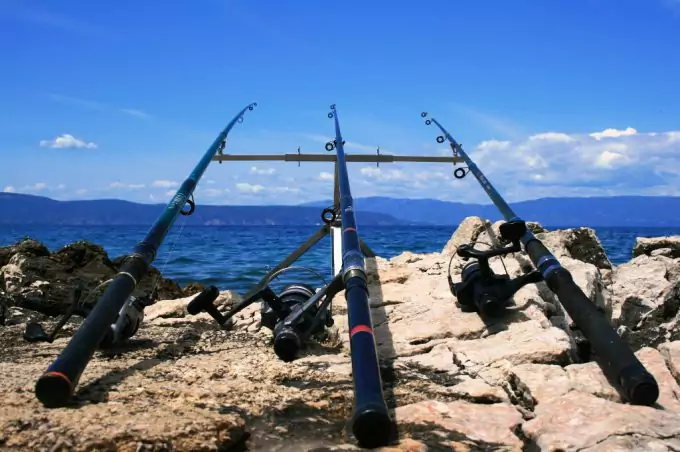
Another feature that is important to talk about is the power of your fishing rod. People often may say that a certain fishing rod has a backbone power. When it comes to rating the power of your rod, we talk about heavy, medium and medium heavy. Generally, if you employ a heavy line, you need a heavy rod as well. Light lines mean a light rod. If you mix the properties of a line and a rod, e.g. light line with a heavy rod, you risk snapping your rod.
Also, remember that if you’re fishing for fish which tends to swim deeper in the water, you will need a more powerful (that is, heavy) fishing rod, which will withstand the pressure and weight of a larger fish. If you fish for smaller fish and near the water surface, you don’t need a heavy rod. Lighter will be a much better choice.
We also need to take a look shortly at the concept of responsiveness and performance. A heavy rod will be much harder to manipulate and as a result will be less responsive and the performance may suffer. This also means that if you use a lighter rod, you are more expected to cast a better casting and even much further than with a heavier rod.
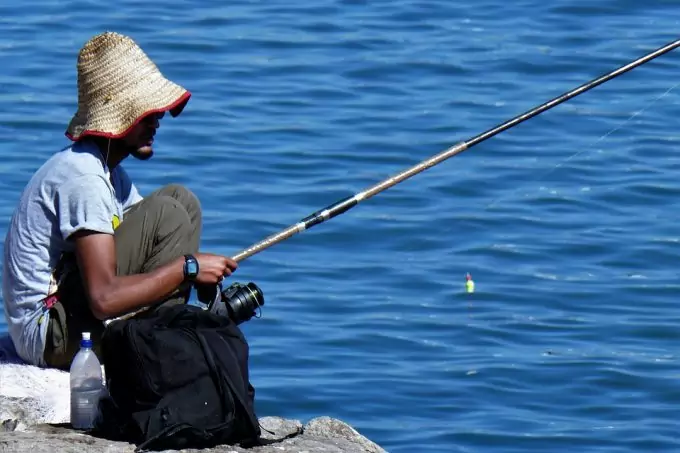
It’s important to also talk about the material the fishing rod is made of. Predominantly, manufacturers use graphite. In order to make it and lay it in the desired shape (and manipulate it), very high temperatures are needed. This is costly, and as a result, high quality rods cost a lot.
The production of graphite goes through two phases. In the first phase tensile strength (high strain, endurance) is achieved and in the second – stiffness. The temperatures need to reach at least 3000 degrees. Unfortunately, some manufacturers prefer to spare money on these high temperatures, and the high strain isn’t fully achieved. This results in a brittle fishing rod. It is cheaper of course, but will not last if you catch a heavy fish.
Other manufacturers decide to use more resin instead of graphite so they achieve the high strain, but this renders the rod too stiff and heavy, which is again inefficient for the fisherman. You can of course look for fiberglass in your preferred fishing rod, since fiberglass is also a reliable material and many high quality rods contain fiberglass. Great results are shown for fishing rods that comprise both graphite and fiberglass.
[the_ad_placement id=”in-text-2-type-r”]So, if you’re specifically looking for better graphite performance, you have to be aware of a specific term in relation to fishing rods, and that is, modulus. Modulus means the actual stiffness. It doesn’t have anything to do with how many graphite fibers are incorporated in the rod (if that’s what you’re looking at). You need to take into account all of the features of the fishing rod, its weight and strain capabilities.
Next, we need to look at the guides. Guides are basically the eyelets through which the line goes. These are often made of metal frames and ceramic rings. Because of the different qualities of the ceramic these guides may increase the price significantly. Another material these are made of is called silicon carbide (SiC). It provides for the least possible friction between the line and the ring. This ensures better casting and easier pulling.
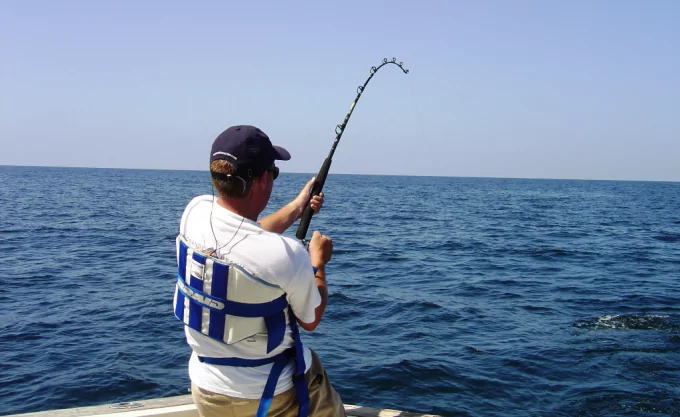
Other materials for guides are alconite, hardloy, aluminum oxide (types of ceramics), titanium wires and even the old-fashioned stainless steel. Unfortunately if often happens that stainless steel guides break and this leads to repairing now and then.
Also, remember that the more rings your fishing rod has, the better the casting, and the more expensive it will be. More evenly spaced rings ensure evenly spread strain across the rod, thus you can use its strength and straining power to catch larger fish.
And as we reach the other end of your fishing rod, we need to talk a bit about the handle. The best material for a handle is usually cork. It’s much less slippery and provides great grip. It’s also a light material. There are of course different types of cork quality and that will generally be reflected in the rod’s price.
How to choose the appropriate fishing rod for your needs
After all these explanations we can also talk about different types of rods depending on what fish you want to catch. For example, if you want to go fish in salt water, you definitely need a sturdy and heavy fishing rod. There are a few types you can choose from – spinning rods, bait casting rods or deep sea rods.
Spin casting rods are often given to beginner anglers. These rods have the reel on top of the rod. Depending on the settings, there is little chance that the line with entangle or snarl while you pull your fish. As you cast the rod, you hold a button, right on the reel, which lets the line loose. To make sure you get the best experience from your spin casting rod, find one which has an anti-reverse drag. These are smoother and of better quality. Cheaper plastic types break very easily.
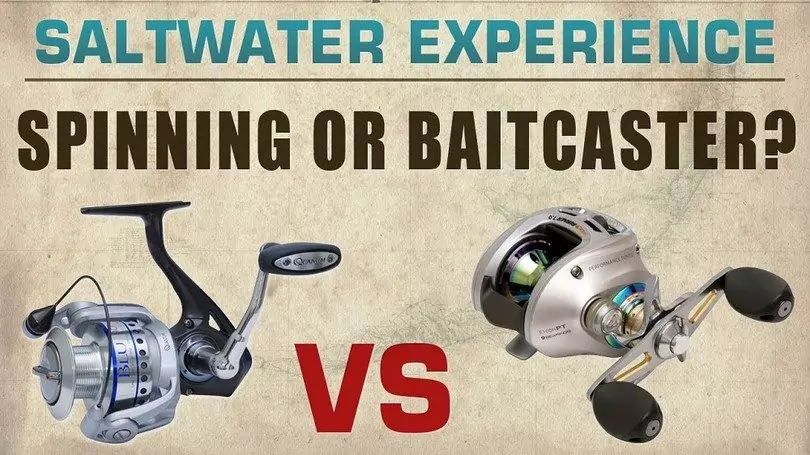
Baitcasting rods are also very popular and encompass wider range of profiles, and feature also anti-reverse drag and perform better when catching larger fish. Reels are almost always mounted on top of the rod. With these, you don’t need to press any button to disengage the line. It will automatically be pulled by the weight of the lure you’ve attached. Yet, there is a casting brake, which is located under the reel.
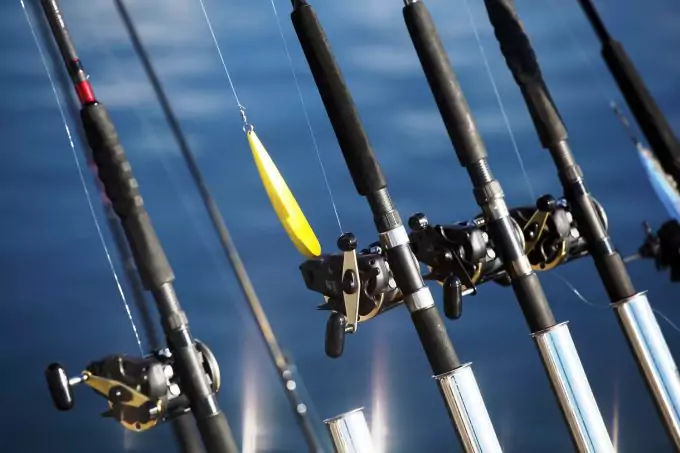
To make sure the brake will function as you want, attach the lure, roll it to the rod’s tip, and make sure the knob is tight and snug. If you push the release button, the lure must not make any move or roll down. If you tilt the rod slightly to the right and gently turn the knob on the reverse side (counter-clockwise) the lure must begin rolling down. Let it reach the ground level. If the spool makes one full revolution, that’s what you aimed at. If it’s more than one revolution, you need to tighten the cast knob slightly and try the whole thing again.
Otherwise, you may want to loosen it a bit, if it reached the ground before one full revolution was made. This is how to customize your bait casting rod for proper braking.
Fly casting is another method and rod to think about. These are usually based on a lure which is very light in weight and mimics insects. These lures can be virtually anything from actual insects to feathers. For this method to work you need a special line, called fly line.
The only thing which drags the line ahead upon casting is the weight of the line itself, since the lure has an insignificant weight. Usually to make this work properly, you need a fly rod as well. As you can guess, these are always light in weight, very thin and long. They are often made of fiberglass and graphite.
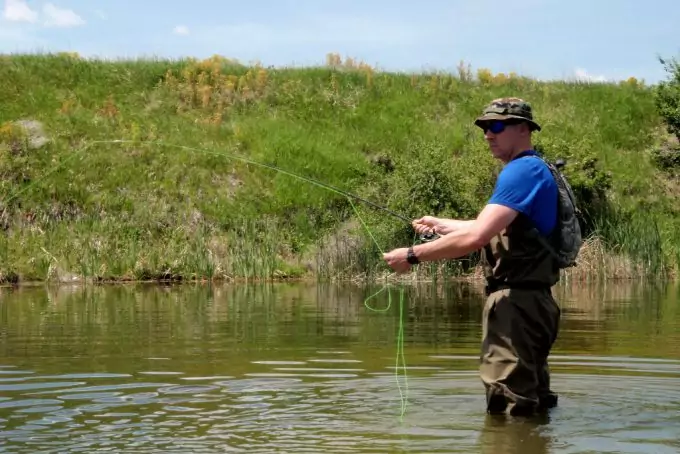
In addition to that, you also need to take into account the length of the rod. For example, longer rods will help you make longer castings. Another example is if you have a fly rod – you can then better control the line. So, long rods should more often be used for smaller catch and provide better control. Shorter rods, on the other hand, will be much sturdier and withstand incredible pulls. Shorter rods are also heavier.
More detailed information on choosing the rod for you
If you feel overwhelmed by this information, you may be pleased to know that there is a so-called all-around rod. It is an average fishing rod, which can handle pretty well both small and light and heavier fish. These rods usually are of medium power and feature fast action, including a spinning reel. These reels are usually mounted below the rod and the spool is open and in the front of the rod. For more information on how to choose the best fishing reels, see our article on this topic.
Because of these properties you can successfully catch small bass or panfish, and also much heavier species like channel catfish and much heavier bass. Light lures are also very easy to cast thanks to the spinning reel. These rods are also great for beginners, as the spinning reel is made to protect the line if cast improperly.
Don’t be tempted though to purchase ultra-light rods because, even though they are light, they can’t withstand heavier weight and are extremely flexible, which at times can turn into a negative effect.
When it comes to medium action and power, as we already said, bait casting rods are great for fish like black bass, channel catfish and walleye. These rods can withstand about 10 pounds of pressure, but require skills on handling them when it comes to using the spinning reel. You need to be more experienced in fishing in order to use baitcasting rods.
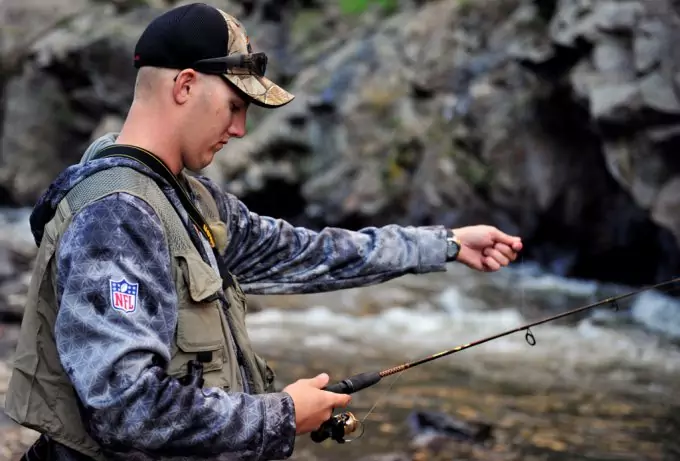
We also need to take a look at the heavy action rods. These fishing rods are under the category of fast action and are ideal for striped bass, flathead and blue catfish and muskellunge. It’s also good if you want to do some flipping jigs if you’re on the hunt for largemouth bass. If you decide to use live bait, you will have to pick a slow to moderate action rod. Its power should be from medium to heavy. These rods are great when used with heavier lines and perform great upon pulling heavy fish. Do you want to customize your fishing rods? See our article on DIY custom fishing rods for more information.
[the_ad_placement id=”in-text-3-type-r”]Now, if you are a novice angler or you plan on surprising your kid with a fishing rod, the best option for you is the rod with a spincast reel. Now, if you want the rod for yourself, a spinning reel (as we already mentioned) is a great start. Keep in mind that, the better you become at fishing and the heavier and larger your fish, the more you will need to go for a conventional reel or even switch to a baitcasting rod altogether.
Often, rods are sold separately from the reels and lines as well. This gives more options for customizing your fishing rod (especially if you’re experienced angler), but this can lead to further confusion among beginners. Often, manufacturers and retailers tend to pack together these items and drop the overall price. They tend to make good combination and the finished rod is balanced and practical.
If you need to test the fishing rod with the reel and line, you can hold the rod (the reel must be attached to it) straight ahead. If the rod doesn’t stay relatively horizontal, and tilts either ahead or towards you, then the reel is too light or too heavy for this specific rod. The so-called balanced outfit means that the rod and reel together balance their weight and the rod feels natural when you hold it (without swaying too much).
Another thing worth considering is the price. We don’t recommend that you purchase a several-thousand-dollar fishing rod, in the hopes that it will catch you more fish. The fact is that if you’re not experienced you will catch as much fish with a cheap rod as with the most expensive.
The same goes for an experienced veteran angler – no matter the fishing rod, s/he will perform great. It is of course true that the more expensive the rod, the more strength and power it has and the more reliable it is. So, if you just want to go fishing once in a while, search for rods for recreational purposes and follow the above advice and keep in mind the details. Depending on your budget you can find pretty decent fishing rods.
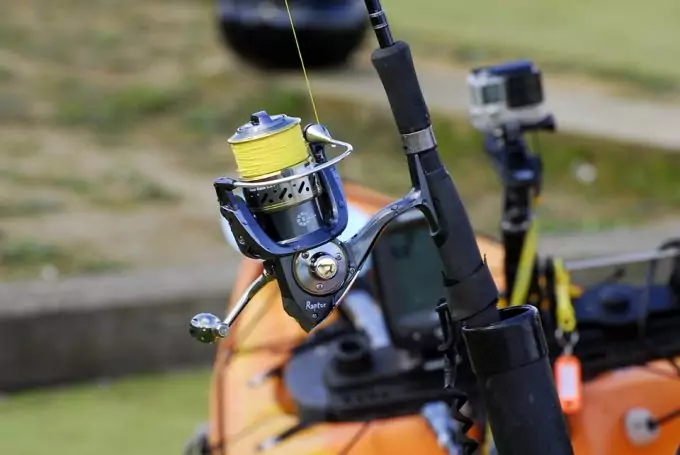
If you’re a seasoned angler, you know what you’re looking for, and this is the sensitivity the rod provides, the responsiveness of your rod, the freedom to choose where exactly to place your lure, how quietly and calmly to do it, etc. Do read our piece on the best times to go fishing to help you with a bigger catch of fish.
All these details may seem at first meaningless, but they can be the difference between a professional and an amateur angler and their choice of fishing rods. So, when it comes to choosing the rod, notice the rod’s action and power – the stiffness and the strain endurance.
Length and thickness also play a huge role. The reel is also of great importance. If you follow the above instructions and apply the knowledge collected in this article you should be able to find the proper fishing rod for your needs.
Having the correct fishing tools do make a big difference. Check out our reviews of the top fishing tools to help you choose the best ones.






One of the first couples of things I would think about are:
1.) What types of fish I will target?
2.) How or where will I be fishing?
Rod length, activity and force will all be considered for every species and strategy. On the off-chance that I will fish from a vessel with a lot of deck space, rod length is not going to be an issue. On the other hand, if I am strolling through the forested areas or working down a waterway bank, length and multi-piece poles are components I would consider.
Fishing is a skill that involves more than fishing gear, it needs commitment.
I always recommend a standard plain old 6 or 7ft rod for beginners. Go to the lake and start fishing for the most common pan fish and you will son learn the basics of fishing.
Once you want to go advanced you can start using different more complicated rods.
We appreciate your opinion, thank you Rodney.